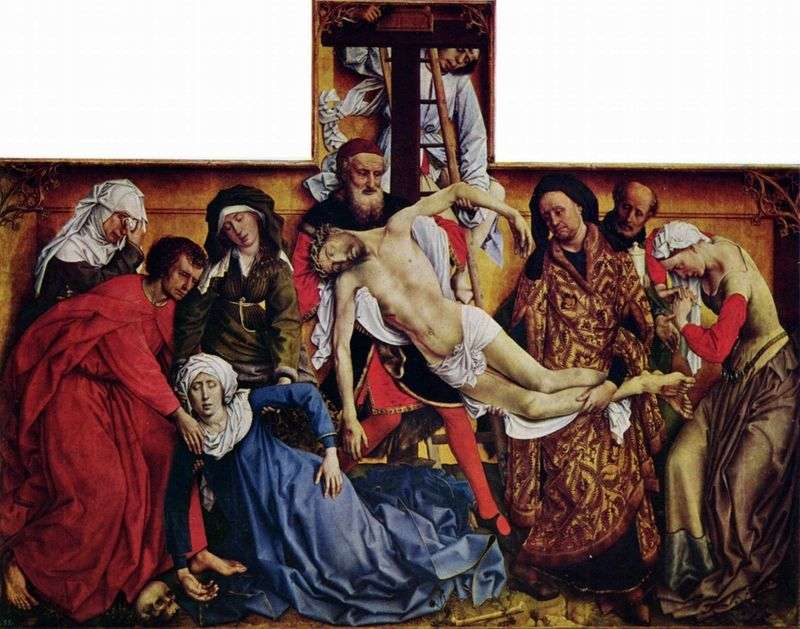
Surprising in the technique of writing and spiritual depth, the image of Rogier van der Weyden’s “Descent from the Cross” is one of the masterpieces of Dutch religious painting. Once the “Descent from the Cross” was a triptych, but its side doors and original frame, unfortunately, did not survive until our time, and we do not know what was on them. While depicting the scene of the removal from the cross, the master, intentionally to increase the emotional impact of the picture on the viewer, deliberately overloads its shallow space with a multitude of figures. It seems that the action does not take place on Calvary, but in the cave itself, where the Body of the Savior was buried.
Weeping women, the pale face of the Mother of God, the mournfully focused faces of Joseph of Arimathea and Nicodemus, the secret disciples of Jesus, all this makes us experience again and again the events of Great Friday. The body of Christ and the figure of the losing consciousness of the Theotokos form the main “knot” of the composition, which is emphasized by the similarity of poses. It is believed that in the weeping woman behind the apostle John, van der Weyden portrayed Maria Kleopova.
In the Gospel of John it is written thus: “At the cross of Jesus stood His mother, and the sister of His Mother Mary Cleopas and Mary Magdalene.” The white head scarf of Maria Kleopova forms part of the white pattern, which, alternating with red spots, can be traced throughout the picture. Since white color is considered a symbol of purity, and red symbolizes the passions of Christ, this pattern acquires not only compositional but also symbolic significance. The edge of the kerchief Mary wipes the tears that flow from her eyes. In accordance with the western iconographic tradition, established by the Renaissance, Rogier writes to Maria with all possible naturalism. Her eyes swelled with sobs, her face flushed. She holds the handkerchief as if she not only wipes away her tears, but also closes it.
So the artist shows us that Mary can not look at the Teacher’s dead Body, that it is beyond her powers. Edges of the painting Rogier draws in the form of a carved wooden frame, including a crossbow in the composition. The last detail can relate to the Louvain Archers Guild. Many experts believe that it was this organization that ordered the “Descent from the Cross” for their church. All figures are written on a flat “wooden” background. Apparently, the master chose him, so that nothing distracts the viewer from the main plot.
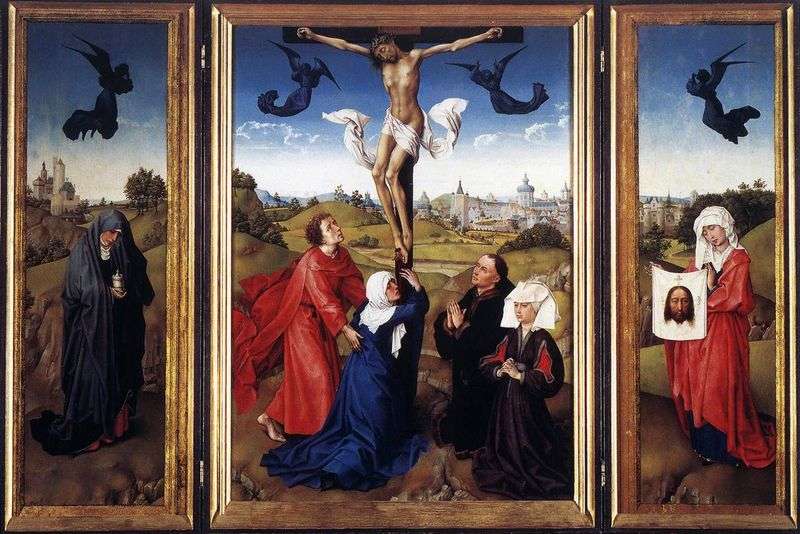 Triptych “Crucifixion” by Rogier van der Weyden
Triptych “Crucifixion” by Rogier van der Weyden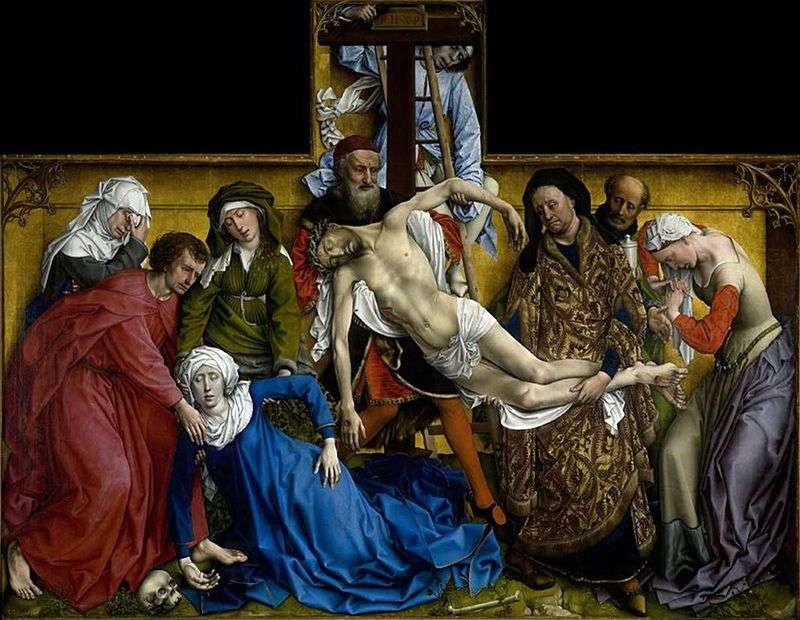 Cake Removal by Rogier van der Weyden
Cake Removal by Rogier van der Weyden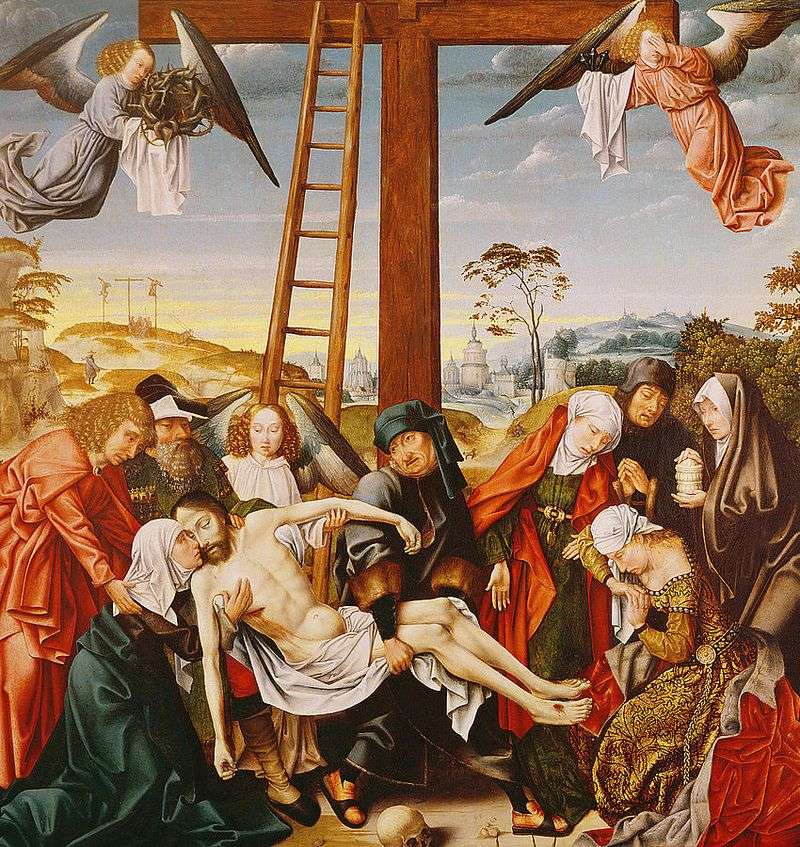 Pieta by Rogier van der Weyden
Pieta by Rogier van der Weyden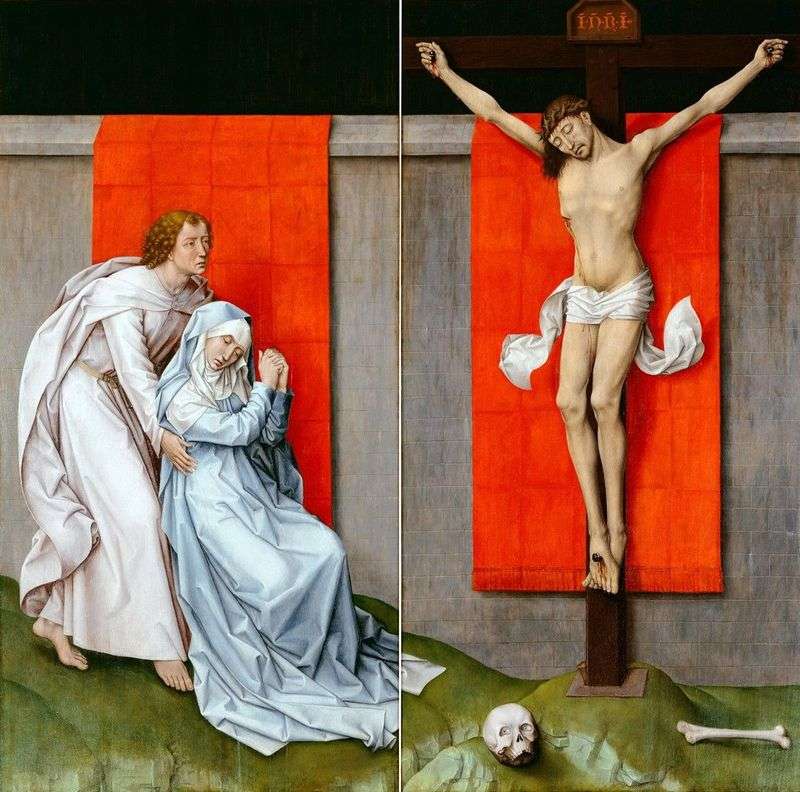 Calvary by Rogier van der Weyden
Calvary by Rogier van der Weyden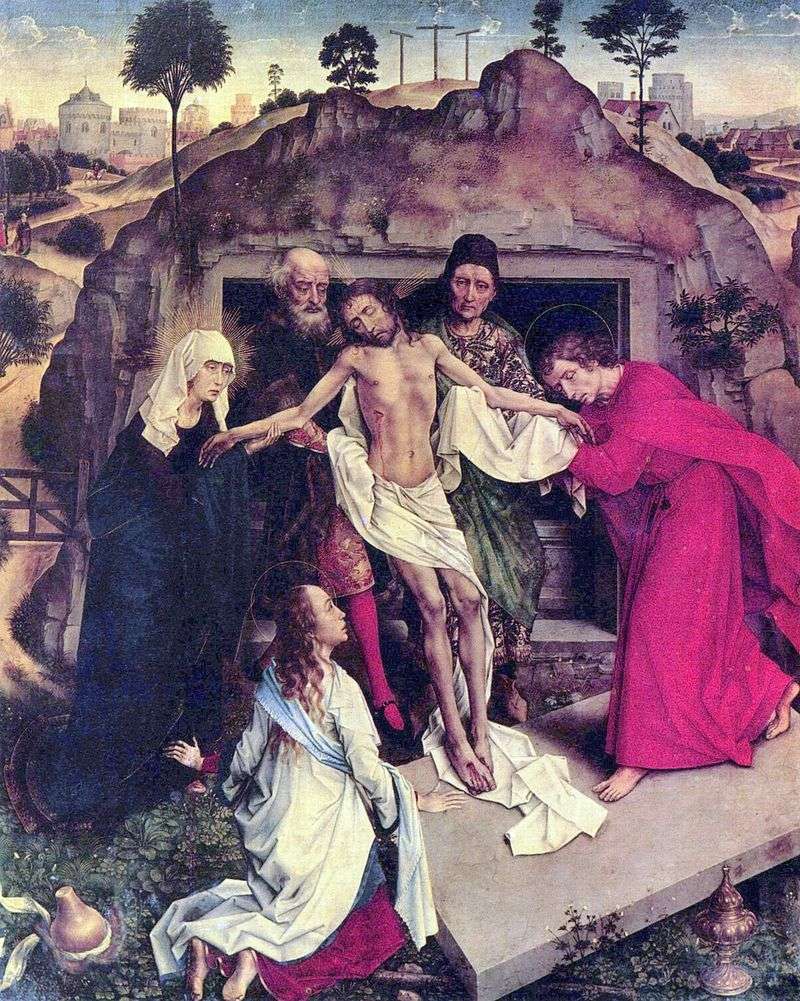 The situation in the grave by Rogier van der Weyden
The situation in the grave by Rogier van der Weyden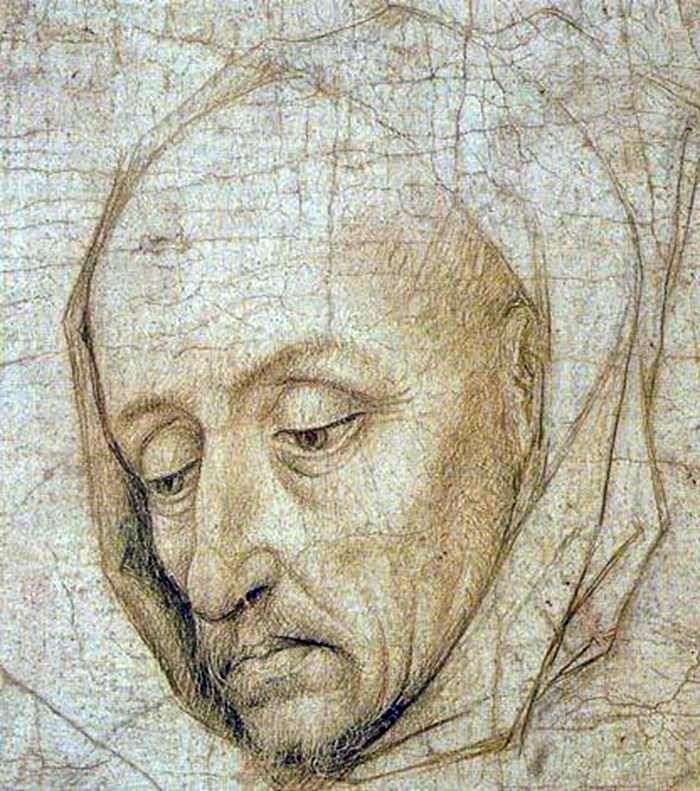 Head of St. Joseph by Rogier van der Weyden
Head of St. Joseph by Rogier van der Weyden Triptych of Marriage by Rogier van der Weyden
Triptych of Marriage by Rogier van der Weyden Madonna with the Child and the Four Saints by Rogier van der Weyden
Madonna with the Child and the Four Saints by Rogier van der Weyden